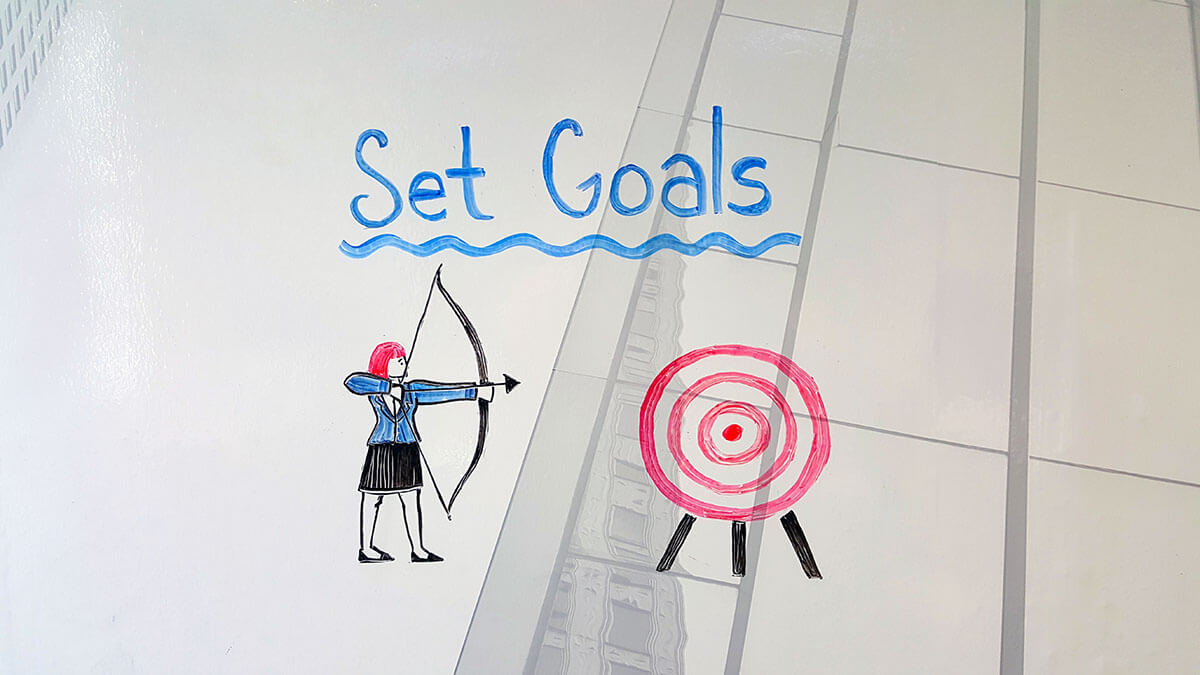
1 Set Goals – Collaboration works best if everyone has a clear end goal in mind. While encouraging creative thinking is vital to the collaborative process, it’s easy for unstructured meetings to veer off topic into unrelated tangents. Setting goals keeps discussions and ideas more focused and therefore more helpful to everyone involved while also avoiding wasted time. Ensure everyone is clear on why this project exists and how they are contributing to a larger goal. Measure milestones and remind your team what everyone is working together towards. Furthermore, setting and then reaching goals is a reminder of the progress you’ve all made, and recognizing accomplishments is a great way to re-energize your team.

2 Listen Actively – This may be advice you’ve heard a hundred times, but that’s because it is so incredibly important to fruitful collaboration. Listening actively means making sure every team member is heard, giving feedback and asking questions. Commit to understanding your colleagues’ ideas and never interrupt. Not only does this facilitate clearer and more valuable communication, but it also ensures team members feel appreciated and respected, which means they’re more likely to speak up and contribute their ideas and energy. This ultimately results in not only a more productive discussion, but also a stronger sense of community in the workplace.

3 Build Trust And Be Open – No one is willing to contribute ideas if they are suspicious of being dismissed. Be receptive to thoughtful criticism, feedback and new perspectives. Too frequently a corporate environment can be plagued by suspicion and distrust between colleagues, often the result of hyper-competition and a rigid hierarchy. Trust clears the way to open and authentic conversation, and you’ll need to trust your team before they trust you. Actively work to create a culture where employees feel comfortable enough to speak up with concerns and suggest changes.

4 Dismantle Silos – When any department or employee works in isolation, they become resistant to change, information doesn’t get shared, and innovation and creativity are stifled. Silos are just bad for business. Breaking employees of the habit of defaulting to their own processes without sharing progress or receiving input is critical to creating a more collaborative work culture. Give team members opportunities to establish connections and understand each other’s roles. Encourage interaction between individuals and teams, whether it’s through collaborative strategy meetings or even more casual events like a company lunch – what’s important is to get your team communicating and building relationships.

5 Break Down Communication Barriers – Communication should be easier than ever – after all, we are spoiled for choice when it comes to communication tools. Text messaging, email and internal instant messaging are just a few of the technologies businesses use. Unfortunately, it’s easy for information to get lost when everyone is using their own preferred communication methods. Avoid miscommunication and disorganization by clearly deciding from the start where and how your team will be sharing information. Poor communication and misinformation are probably the most common frustration of team projects. Get ahead of this problem by agreeing at the very beginning on how to stay organized and keep each other updated.

6 Don’t Rush, Build Relationships – Allow team members the time to get to know each other and become more familiar with each other’s strengths, skillsets and personalities. Avoid the instinct to rush into a project – a team of strangers who are uncomfortable working with each other will communicate less and ultimately waste time with inefficient work processes and poor collaboration. Instead, give team members the space to build trust and a common vision so that everyone is working in the same direction together in a more effective manner. Some companies do this by taking personality tests or formal assessments of everyone’s workstyle, but simply having team lunches can be just as effective. Find what works for your company’s culture.

7 Use Visualization Techniques – Brainstorming is a valuable process for nearly every stage of a project and goes hand and hand with successful collaboration. The use of visualization tools like peerhatch allows group members to clarify, share and compare ideas easily and quickly while keeping everyone engaged and fostering a creative environment necessary for inspiring innovation. Having a large writable surface gives everyone on the team the freedom to contribute their ideas and allows you to look at and consider many different perspectives and possibilities all at once. Furthermore, seeing ideas drawn or written out rather than just discussing engages the visual as well as auditory parts of the brain – making it easier to understand complexities, compare and contrast, and simply remember important details.

